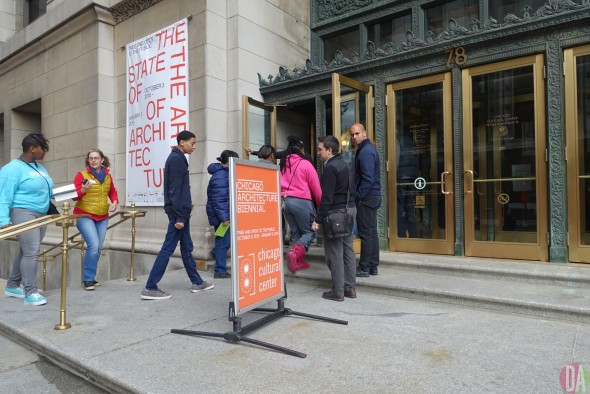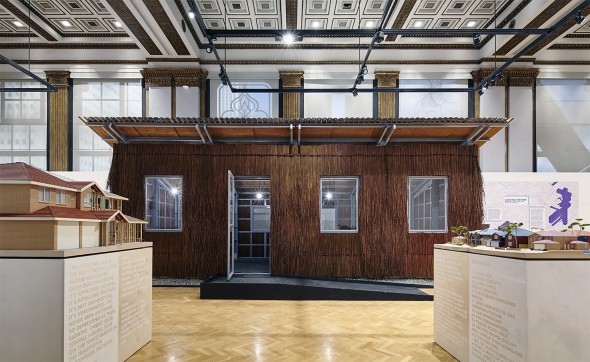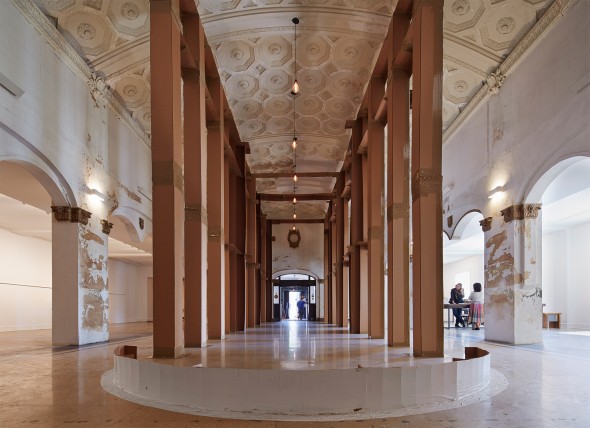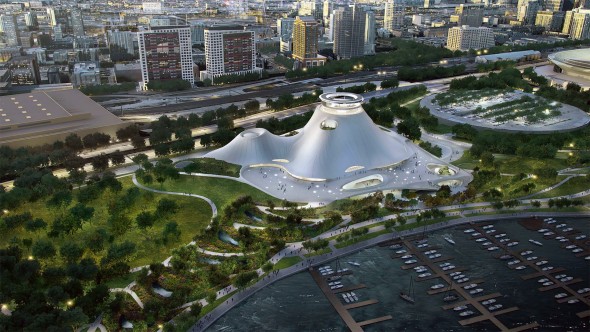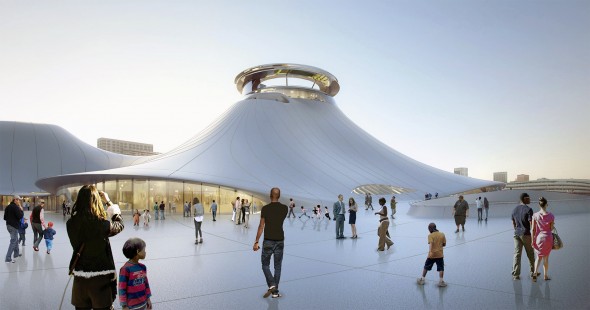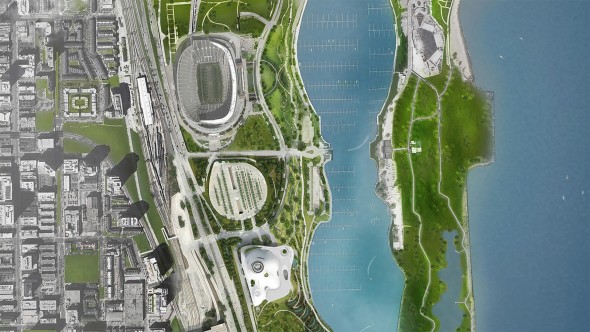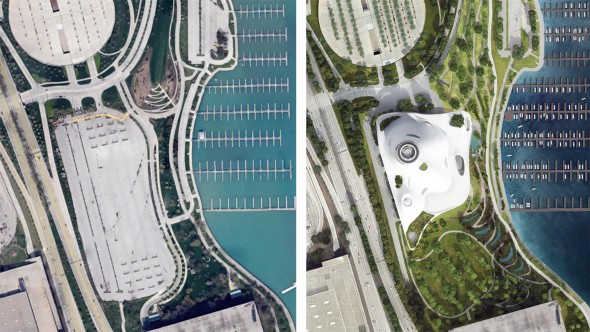above> chicago horizon – grant park
The shoreline of Lake Michigan has always played a central role in Chicago’s urban identity. During the 1893 World’s Columbian Exposition, architect Daniel Burnham sought to incorporate the lake into the fairgrounds, and his 1909 Plan for Chicago proposed to reclaim the entire length of the lakefront as a place of leisure for all inhabitants of the city—an idea realized during the 20th century. Today, the lakefront is a celebrated and heavily used public space that is a major destination for both visitors and local residents. It features over twenty miles of public parks and beaches, as well as pedestrian and cycling routes.
The Chicago Park District currently oversees over forty kiosks that punctuate the shoreline, which during the summer offer food, retail, and recreational services—ranging from beverages to clothing to surf rentals.
The Chicago Architecture Biennial will unveil four new kiosks. One will be decided through an international competition, and the other three will be designed through collaborations between local architecture programs and internationally-renowned architects. The winning competition entry and the three commissioned kiosks will be displayed in Millennium Park during the Chicago Architecture Biennial (October 2015 – January 2016). In the spring of 2016, all four kiosks will be installed on the lakefront.
[ grant park ]
Grand Horizon won an international design competition organized by the biennial drawing 421 entries from 40+ countries. The jury likened this steel-framed, flat-roofed structure, to that of Chicago’s Ludwig Mies van der Rohe. After being displayed in Millennium Park, the kiosk moves in 2016 to Queen’s Landing, an empty plot east of Lake Shore Drive and opposite Buckingham Fountain. The plot is named from a 1959 Chicago visit by Queen Elizabeth II.
“Instead of creating an object that people would look at and marvel, we created something that would be inhabited, something that would create an interface between the biennial and the public at large,” said Providence, R.I., architect Aaron Forrest. He designed the kiosk with fellow faculty members at the Rhode Island School of Design: architect Yasmin Vobis and structural engineer Brett Schneider.
The competition winner, Grand Horizon, will receive the BP (BP is the biennial’s lead sponsor) Prize, which includes a $10,000 honorarium and a $75,000 budget to realize the design. It’s estimated to relocation to Queen’s Landing will cost another $25,000.
The other kiosks will be built in collaboration with Chicago’s architecture schools. The biennial is supplying $50,000 apiece for their construction
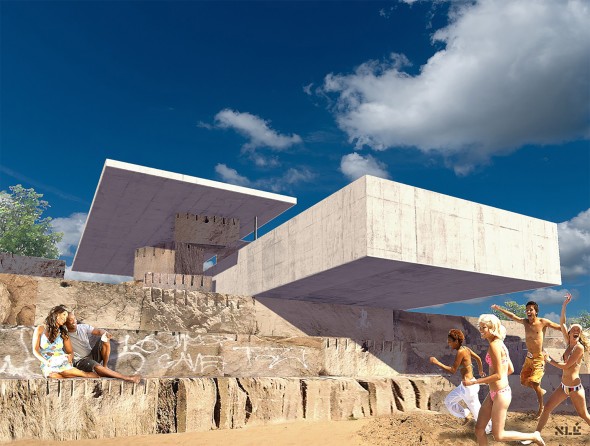
above> montrose beach pavilion
[ lincoln park – montrose beach ]
At Lincoln Park’s Montrose Beach, Nigerian architect Kunle Adeyemi calls for a pavilion that boldly projects over stepped limestone blocks at the shoreline’s edge. The School of the Art Institute will collaborate on the project, which could serve as a grab-and-go version of a restaurant at Montrose Beach, Herda said.
Built out of concrete and limestone and meant to recall the stone blocks that protects the city’s shore, the cantilevered pavilion will project out over the beach providing shelter and a meeting place on the beach. The School of the Art Institute will collaborate on the project. The kiosk will be represented in some form in Millennium Park but won’t be built there because of its complex construction.

above> cent pavilion – north avenue beach
[ lincoln park – north avenue beach ]
Chilean architects Mauricio Pezo and Sofia von Ellrichshausen have designed a 40-foot ziggurat made of stacked wood shapes. Wide doors will lead into the ground floor of the kiosk, which will contain a commercial space and be lit by skylights, Sarah Herda, the biennial’s co-curator, said. Collaborating is the Illinois Institute of Technology.
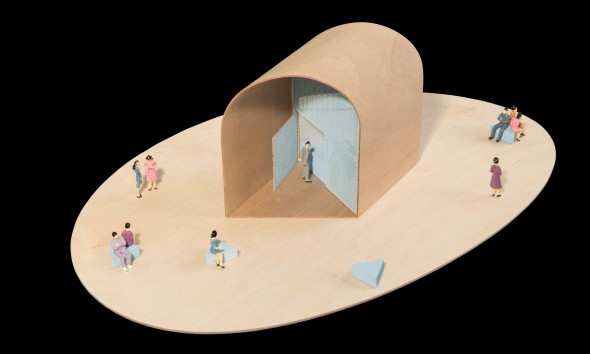
above> summervault – harold washington playlot
[ harold washington playlot park – 5200 south hyde park blvd ]
Colorado architect Paul Andersen and Chicago’s Paul Preissner create a ‘freestanding hangout’ inspired by the look of a Persian garden. A vaulted metal roof protects two triangular spaces — one retail, one communal. The University of Illinois at Chicago collaborates.
The Jury for the Lakefront Kiosk Competition includes:
David Adjaye, Adjaye Associates
Jeanne Gang, Studio Gang Architects
Joseph Grima, Chicago Architecture Biennial
Sarah Herda, Chicago Architecture Biennial
Sharon Johnston, Johnston Marklee and Associates
Michael J. O’Brien, BP
Rob Rejman, Chicago Park District
[ Chicago Architecture Biennial ] @chicagobiennial




